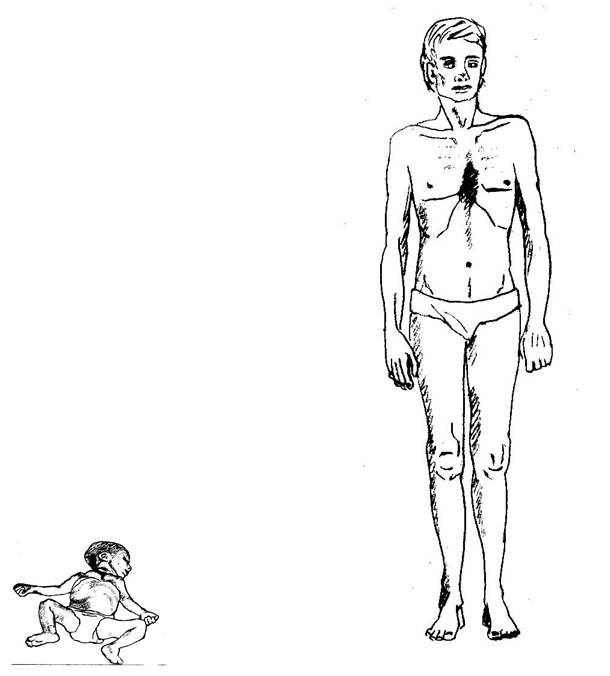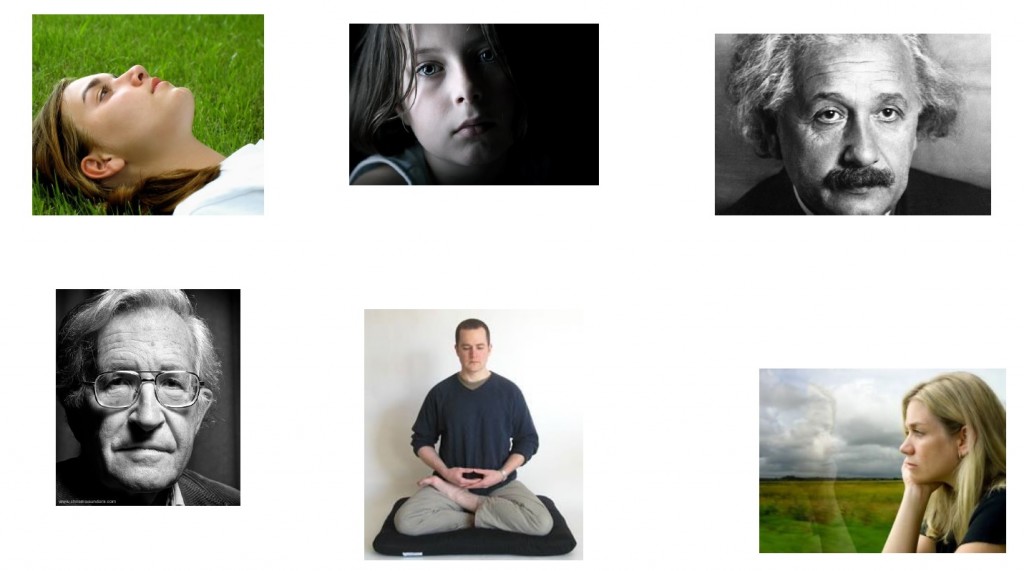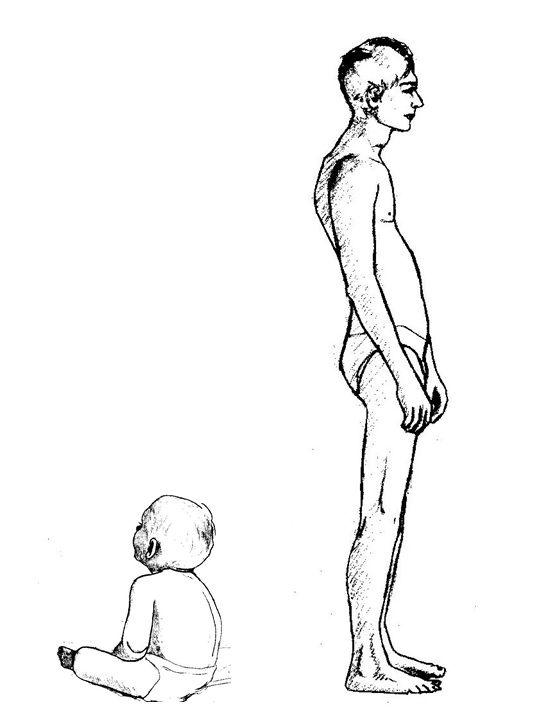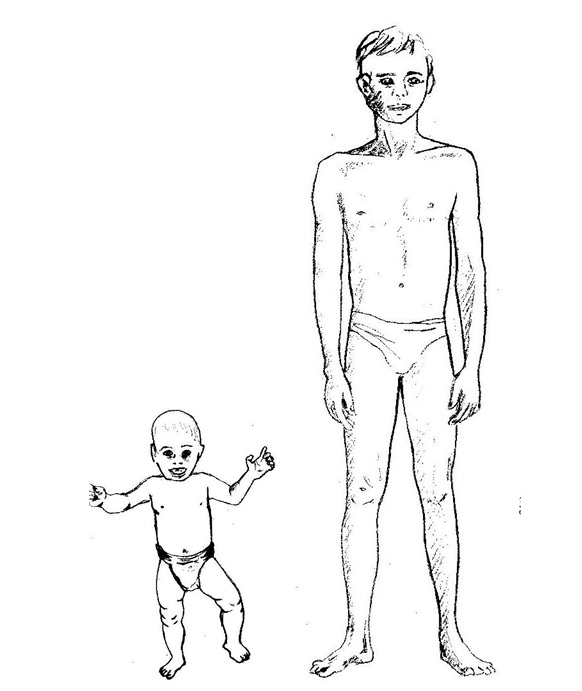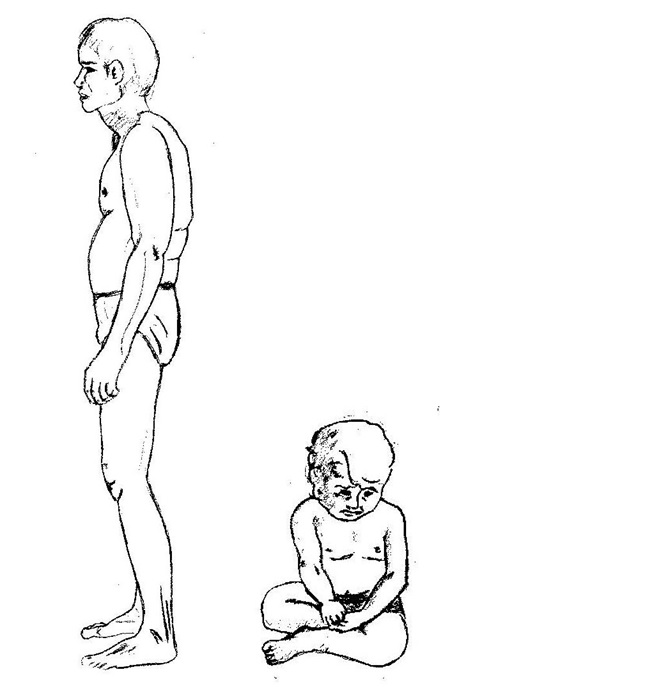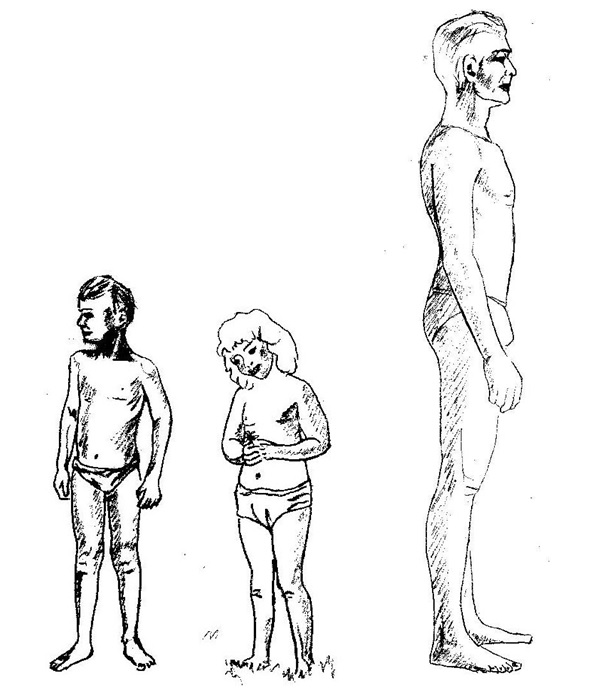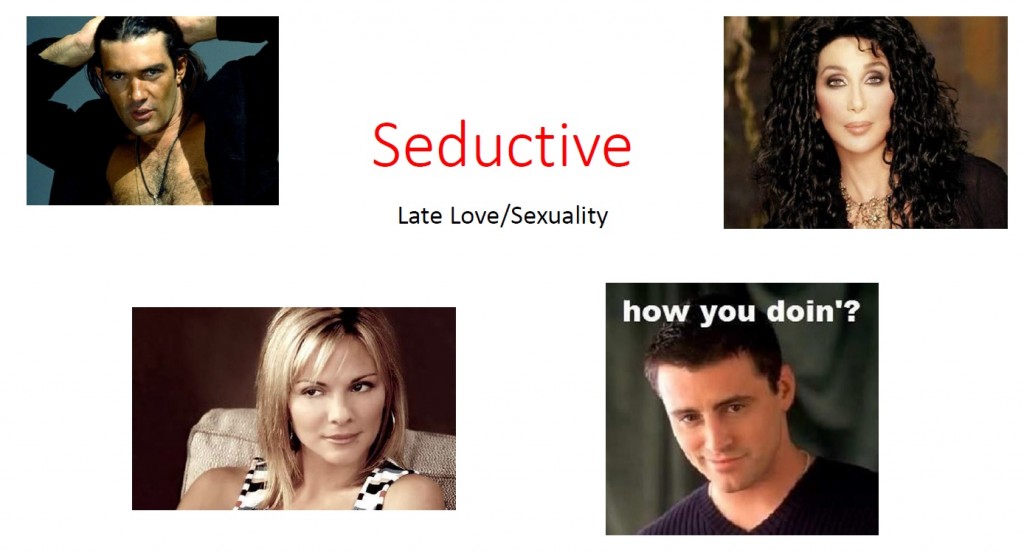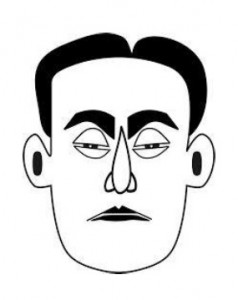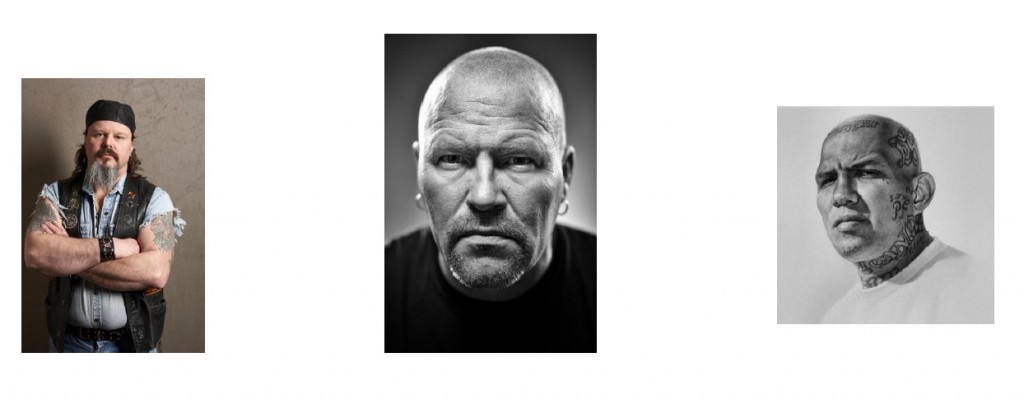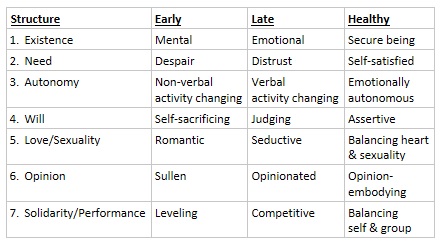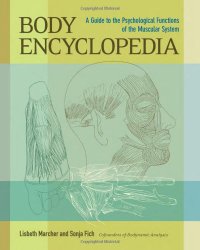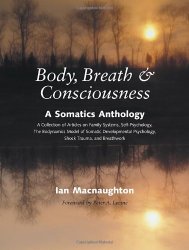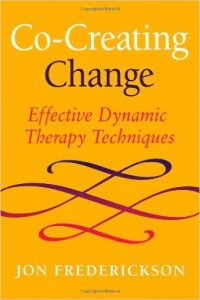Bodynamic Character Analysis guide
We learn as children to ignore any elements of reality that make our caretakers anxious so we can preserve our bond with them. If our own emotions appear to cause stress to our parents then we will unconsciously learn to suppress them compromising our own authenticity. Children instead of learning emotional regulation will then learn emotional dissociation, through ignoring their feelings much like their parents do. Avoiding feelings by either giving up on them or holding them back, is what causes psychological defenses to form. People who use defenses to ignore their feelings, lose the information feelings provide. Feelings and desire no longer mobilize their actions; anxiety and defenses do. If expressing certain feelings were dangerous in a past relationship, the body is inclined to react as if it is still dangerous in the present.
Humans, unlike many animals when they are born, are completely dependent on a caregiver (usually their mother) for survival. That survival is implicitly a form of relational survival where in order for the child to feel secure, it must feel adequate emotional support and receive appropriate mutual connection. This is the signal that the child’s basic biological needs such as food, water and shelter will be met. The desire for approval is the primary governing factor in early human relationships. Threats of perceived emotional rejection are interpreted by the body as a direct threat to survival and immediately summon a defensive response.
Having learned implicitly that certain feelings make a caretaker anxious the child uses defenses when those feelings arise. These defenses, learned in childhood, become strengthened through countless repetitions forming patterns which take the shape of character structures by adulthood. Character structures reveal how we learned to maintain a relationship all the while compromising our core feeling self. They are shaped in an attempt to escape pain. Since they are formed at such a young age most people assume that character structures are simply “how they are” not realizing change is possible.
There are two types of defenses. Repressive defenses are ones we employ to keep our own feelings at a distance creating barriers to self-intimacy. Tactical defenses are used to keep others at a distance and create barriers to relational intimacy.
The worst thing about character structures is that they limit our ability to be in mutual connection with ourselves, with others, and with the world; they keeps us from being able to commit to life. It is important to realize that while character structures are compromises in authenticity, they are fundamentally creative survival strategies. They served an important purpose during our childhood years, and it is important that we have compassion for those aspects of ourselves and others. It is only through compassionate affirmation of our suppressed selves that we can re-own the parts of ourselves that we have lost.
The Bodynamic system is a revolutionary therapy created by a team of twelve Danish therapists led by Lisbeth Marcher over the span of several decades and 15,000+ case reports. It was developed to help people regain their lost dignity and achieve their maximum potential as a human being.
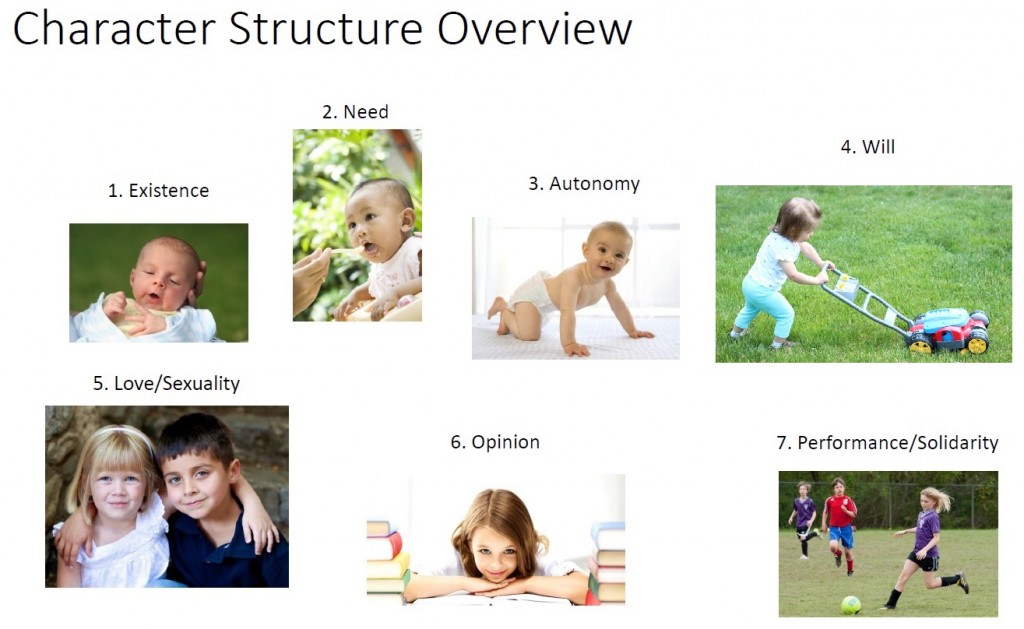
Phases of Development:
- Existence (2nd trimester – 3 months): where a basic imprint of one’s right to exist and feel safe in contact is formed.
- Need (1 month – 18 months): The right to sense ones own needs, express them and have them met.
- Autonomy (7 months – 2.5 years): Curiosity & impulses drive the impulse for mobility. Child learns to crawl and walk in order to explore the world, while keeping contact and accessing support when needed.
- Will (2 – 4 years): The ability to make choices and choose direction using one’s power, as well as navigating relationships
- Love/Sexuality (3 – 6 years): Where the child learns to love in a romantic way and learns to integrate heart and sexual/sensual feelings.
- Opinion Forming (5 – 9 years): The child learns to open up the world through thought, and learns to deal with rules, norms and culture.
- Solidarity/Performance (7 – 12 years): Where the child finds a place in culture by learning how to be a member of group and community; by exploring solidarity and competitive impulses.
Polarity Spectrum
All character structures exist on a spectrum which is contingent on the type and timing of nurture the child receives in development. Overwhelming emotional stress that existed early within a particular phase of development creates a certain kind of psychological and emotional resignation which is then mirrored physically in the body. This results in character deficiencies and a loss of emotional and psychological skills. When the child has the opportunity and support to develop emotional and psychological resources but then emotional stress came later on in a particular phase of development, this will result in a “holding back” typically of anger, and a type of emotional armouring occurs. This is then also reflected in the neuro-somatic organization of the body.
Continuum

1. Existence
[ezcol_1half]
Mental
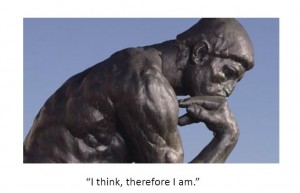
General Attributes:
- Schizoid
- Dissociation – Splits into head & thoughts; schizoid
- Child feels unwanted/threatened by annihilation
- Feels connected to others through thoughts
- Avoids physical/emotional contact; becomes “emotionally absent”
- Existential Terror/Rage of annihilation at the core (holding deep)
- Fear of fragmentation
- Feels isolated
- Make energetic contact
- Thinks philosophically
- Defense: Intellectualization, Rationalization
Physical Attributes:
- Energy is drawn to the bones
- Eyes unfocused, looking into distance
- Takes up little space
- Uncoordinated when moving
Need to Learn:
- To feel body, emotions and concretize understanding
- Build capacity for emotional closeness
[/ezcol_1half]
[ezcol_1half_end]
Emotional
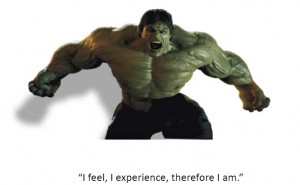
General Attributes:
- Hysteric
- Flight toward life – Splits into body & emotions; hysterical
- Child felt secure at one point, but now, no longer feels wanted
- Sense of having lost paradise, and of desperately wanting to regain it
- Child flings itself toward intense contact and high emotional charge in an attempt to ensure it’s own continued existence, and that of the world
- Feels connected to other through emotions
- Clings to emotional contact/expression
- Becomes activated when conflict is sensed
- Insists on emotional contact
- Feels lonely
Physical Attributes:
- Energy is located around bones and skin, but lacking in the muscle layers in-between
- Skin looks flushed or has a more reddish hue due to increased blood flow to the skin
- Eyes are focused, fixed on foreground and background simultaneously
- Their energy takes up a lot of space
- Powerful activity in their movement
Need to Learn:
- Accept and appreciate contact without powerful emotions
- Distinguish between reality and intuitions by by precisely naming their feelings and emotions
[/ezcol_1half_end]
Read more about early mental existence…
“The mental existence position (early existence) is thought to develop in the second trimester in utero. At this time, the fetus has few mechanisms with which to protect itself, primarily contracting or relaxing fascia. If the stress experienced by the fetus becomes transmarginal, the protective response is to pull the energy out of the muscles and periphery and into the head and the spine. This splitting of the energy reduces the felt anxiety, pain, and despair at the cost of giving up a great part of connection to the mother (and the world).”
The biggest challenge for dominant early mental types is simply becoming aware of how emotions manifest themselves sensationally in the body.
Mental types are characterized as emotionally holding deep at the core in a skeletal type fashion sort off like a stick man. A good exercise is for these people to practice imagining the dense consciousness energy locked inside the bones and inner lines of the body slowly expanding outward and filling up the entire body. This really involves sending consciousness down from the brain into the body so it permeates the entire body.
People with early mental existence structure tend to be “brilliant” in the intellectual algorithmic sense. Due to derailment in this structure and the metabolic conversation enacted by dissociation from the physical body into the mind these types tend to identify quite strongly with their thoughts. The downside is due to a lack of emotional identification with their body their social/emotional intelligence suffers making them not as adept at reading body language and important social cues. Because they are not in tune with their own emotions at a deep level it is difficult for them to be in tune with someone else’s emotions at the body level. Emotions are more like mental abstractions of the mind to these types rather than concrete a concrete biological energy. These types connect and bond best with other people via their thoughts.
Drawings sketched from photos in Bentzen (1968) and Hviid (1992).
“This infant is born 5 weeks early, and shows some very early neurosomatic organization, governed by the unmyelinized parasympathetic vagus. He has some muscle tone and beginning reflexes, which make him flex his legs and fingers and turn his head, tilting it a bit backwards.
‘The schizoid structure is shaped by threat of annihilation’ (Bioenergetics).
This man has been asked to stand straight. His posture shows the asymmetry and twists of the schizoid pattern. There is little evenness between the right and left side of the body. The arms and legs are stiff and have little charge. His gaze seems unfocused and distant. The main aliveness is deep in the torso and in the head. He seems to have little natural muscle tone. In somatic character reading, this posture translates into: holding together against fragmentation, and contraction towards the body core and into the head. The posture shows strong tension at the base of the skull, corresponding to the activation of the earliest startle and orienting reflexes.”
Sample pictures:
Read more about late emotional existence…
People with late emotional structure prefer to bond around strong feelings. Due to the over-identification with emotions and the body their cognitive ability tends to be underdeveloped. This leads to emotions that feel uncontrolled & uncontained and lack differentiation. Emotions often thus tend to feel like overwhelming forces.
This is a state where typically people say they “wear their heart/emotions on their sleeve”. Really it seems like they wear their emotions all over, and sometimes they may even be proud of this, as if that is who they are.
Being aware of emotions is great, but instead of “wearing” them on the outside they should be embodied on the inside and shine out. This is am important subtle distinction. Ideally one should be the managing emotions and not them you.
The biggest challenge for late emotional types is engaging the rational mind to help articulate, label and contain emotions. Name it to tame it.
Sample pictures:
Watch a video of Bodynamics instructor Anne Isaacs demonstrating this structure:
2. Need
[ezcol_1half]
Despair
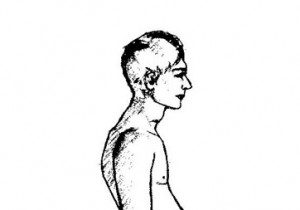
General Attributes:
- Mother is emotionally absent and does not meet needs of child; ex. A child left alone to cry for hours on end.
- Does not recognize their OWN needs
- Feels abandoned; left behind
- Waiting for nourishment to come
- Can love others, but has difficult taking love in from others; cares more about others than self
- Energetically & emotionally merges with others and environment, loses self
- Frequently engages in projective identification (defense)
- Is very good at mirroring others
- Tendency towards a pollyanna outlook on life; glass half full
- “If you’re happy, then I’m happy.” ; “It’s all OK.”
- Makes use of superficial platitudes, such as “Love is all there is.”
- Tend to “babble” more
- Don’t take in or absorb energy
- Can result in anorexia.
Physical Attributes:
- Eyes yearning/sucking seeking expression
- Lips tend to be Full & ‘loose’
Need to Learn:
- To feel deeply what they need
- How to take contact in and absorb it so it lasts. Build capacity for satisfaction
- Distinguish between their own needs and others; differentiate themselves from others & environment
[/ezcol_1half]
[ezcol_1half_end]
Distrust
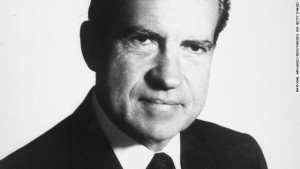
General Attributes:
- Mother only half-meets the needs of the child
- Paranoid, distrustful, bitter, irritated, injured, pouty, cynical
- Is certain others will not fulfil their needs.
- Feels misunderstood. Takes what they can get.
- Able to recognize their needs, however bitter that they are unfulfilled.
- Pessimistic; glass half empty
- “If I have to tell you my needs, it’s already too late.”
- Knows their needs but it only feels right when they are met spontaneously.
- Makes emotional but unarticulated demands. Typically will not ask for help.
- Gives freely but is bitter over not receiving.
- Rejects what they receive as wrong/not good enough. Takes in, spits back out.
- Typical Defenses: Complaining, Ruminating
- Nothing will ever satisfy them.
- Manage their energy and feelings by rejecting
- Can result in bulimia.
Physical Attributes:
- One eye sucks in, other pushes away.
- Lips tend to be pursed
Need to Learn:
- That they themselves know what they need
- To communicate their needs with specifics
- Build capacity for satisfaction when needs are met
[/ezcol_1half_end]
Read more about early need – despairing…
People with early need tend to be the happiest kind of people you can meet. Filled with seemingly boundless optimism and positivity they are forever looking at the bright side of things regardless of circumstance. Even when horrible things have happened they will be inclined to say “It’s OK.” Often they are the greatest proponent of positive-thinking as the solution to the worlds problems. If only people spent more time thinking happier thoughts the world would be a much better place.
That over-the-top positivity in reality is a coping mechanism for a profound deep loneliness and despair they feel underneath. In fact the coping mechanism can be so strong they are scarcely aware of the pain then is buried so deep, out right denying its existence. It can in extreme cases become virtually unconscious.
People with early need tend to be empaths. They are very good at mirroring other people emotionally but almost always at the expense of their own emotions. They naturally put the emotional states of other people ahead of their own and try to cater to their emotional needs.
Winnicott’s conception of a “false self” due to a process of introjection is perhaps the defining aspect of early need.
“One of the main defences Winnicott thought a baby could resort to was what he called “compliance,” or behaviour motivated by a desire to please others rather than spontaneously express one’s own feelings and ideas. For example, if a baby’s caregiver was severely depressed, the baby would anxiously sense a lack of responsiveness, would not be able to enjoy an illusion of omnipotence, and might instead focus his energies and attentions on finding ways to get a positive response from the distracted and unhappy caregiver by being a “good baby.” The “False Self” is a defence of constantly seeking to anticipate others’ demands and complying with them, as a way of protecting the “True Self” from a world that is felt to be unsafe.
Winnicott thought that the “False Self” developed through a process of introjection, or internalising one’s experience of others. Instead of basing his personality on his own unforced feelings, thoughts, and initiatives, the person with a “False Self” disorder would essentially be imitating and internalising other people’s behaviour—a mode in which he could outwardly come to seem “just like” his mother, father, brother, nurse, or whoever had dominated his world, but inwardly he would feel bored, empty, dead, or “phoney.” Winnicott saw this as an unconscious process: not only others but also the person himself would mistake his False Self for his real personality. But even with the appearance of success, and of social gains, he would feel unreal and lack the sense of really being alive or happy.” (source)
At this early stage of development the child does not distinguish self from mother and identity is largely merged. People with early need are thus in a way stuck in this state and boys/men will tend to have more feminine ways and qualities about them especially in an emotional/feeling kinds of ways. People with early need thus need to refocus and centre in their own emotional reality so that they can separate self from other. People with early need tend to have a terror of doing this though as it feels like a threat to survival at a primordial level. However by recognizing that they can begin to start to step into their own true power by shifting the focus back on themselves. This is not some form of narcissism, in fact it will build greater empathy, because empathy and attunement for the self precedes doing it appropriately with another. It is important to see the other as a separate individual entity with their own separate emotional reality and to be able to distinguish that from the personal emotional reality and identity in order to establish genuine connection. The problem is that early need negates separation and appreciation for distinct individuality in order to merge and de-differentiate with the other reflecting the early childhood/mother relationship. That dynamic while “healthy” and necessary between ages 0 and 8 months old, is highly dysfunctional in an adult relationship context.
They tend to have a characteristic fake smile. They smile with their face particularly the bottom part and not with the lower parts of the body. In fact smiling is their number one defense against anxiety which is often the cover for sadness. They may even giggle and laugh when emotionally things become particularity stressful as a way to cope themselves and also help others cope. Their jaws and neck may even hurt from unconsciously smiling so much. The smiling in a way is a type of emotional reflex shunting energy away from pain felt in the core part of the body up into the face. Infants have precious little to communicate with so they use mostly their eyes and their expressive face in an attempt to influence those around them.
In extreme cases some people can be locked into a perma-smile. This happens at such a young age and is wired so deeply into the earliest parts of the emotional brain few people doubt its authenticity.
A way to help fix this inauthentic coping smile issue for these people is for them to notice where the “happy” energy for their smile originates from. If it originates from the core of their being near their sacral chakra or their heart it is authentic. If it originates seemingly from the jaw area of itself then it is not authentic and it is a unconscious repression strategy.
People with this structure because they don’t really have a firm grounding in their own needs and desires will often adopt other peoples needs and desires to distract themselves from the lack of being able to feel their own. They thus are constantly engaged in helping other people realize their dreams rather than getting in touch with and figuring out their own.
Often these types take on the needs of others, as they took on the needs of the mother in an attempt to insure their own survival. This can result in carrying the emotional burdens of others. They emotionally transpose themselves into the other people they are around and try to subconsciously figure out and meet their emotional needs to the best of their ability. In essence they merge their emotional field and their identity to a large degree with others as well as in extreme cases their environment.
They are also really good at superficially meeting the emotional needs of others. By this I mean for example they are good at comforting others, but not good at actually helping fix the underlying root emotional issue. In this sense they dupe themselves and others and then wonder why things don’t work out better when things on the surface seem to be so straight forward.
Most emotional issues that people run into are from character structural issues as described in the bodynamic system. Those fundamental character structures and their associated ego functions need to change if true authentic change is to be seen.
In this way people with early need while superficially satisfying people often make the underlying problem worse by covering it up thereby enabling further core dysfunction. People with early need mean well, but are horribly misguided at this level. They are blind to the very thing they need the most, and therefore are blind to thing others need the most as well.
The phenomenon of “merging” with another’s energy and emotional field also gives the illusion of intimacy and connection. This can be a real trap, because it feels pleasurable to a large degree, but there is a nagging feeling that it will never be enough. The neediness can fuel intense desire for contact but it comes from a place of desperation rather than a place from abundance. Here centering within oneself is of supreme importance, and becoming self-satisfied with the contact when it is there, such that an out-flowing of satisfaction occurs….a production rather than a consumption of contact.
People with early need are also very prone to universalizing and the use of vague platitudes. The may say things like “All you need is love” as if that alone could solve all the world’s problems. By being ambiguous they are avoiding information content. This relates directly to the feelings of resignation due to actual precise needs not having been met in early childhood. Not having any specific needs is a crude attempt to absolve themselves of feelings of deeper despair. There is a real push into the mental abstract here and a avoiding or denial of concrete needs in physical reality.
To resolve this structure these people need to come in touch with that profound sadness they feel inside and move through it in order to experience themselves more fully and deeper. That sadness is usually deep within the core of their being in the sacral chakra area. By avoiding the feelings of sadness with happy platitudes they cut themselves from the source of their own core authentic needs and desires. That core desire being one for deep intimate unwavering relational and physical contact validating their core self. A highly attuned therapist that understands this can greatly facilitate this meeting the client and validating their sadness so they do not need to bear it alone. Physical support is also critical especially in the serratus muscles so the emotional experience of the sadness is supported to its greatest depth, and then also the healing contact.
Once that need is met, the next thing is becoming in touch with and being able to reach out and get the contact they need, when they need it. In bodynamics we work directly with this getting people to reach out and pull in contact slowly tracking the feelings and sensations within their body. Learning how to take contact in and hold it in to build a secure foundation within oneself is the next step. This then provides the necessary resource to be able to achieve feelings of self satisfaction at the very core of their being. This touches a lot on the ego function of self esteem as well.
As this ability to feel primal self satisfaction deepens, so does authenticity. There is then no need then for superficial happiness and platitudes. These people can then connect to their own pain in deep and meaningful ways and then connect to others in likewise fashion without the compulsion to cover it up and “make” it all better.
Drawings sketched from photos in Bentzen (1968) and Hviid (1992)
“This baby is sitting up, but his spine is not yet strong enough to hold him in the upright position. He collapses and his head angles upwards awkwardly to make eye contact. Except for the head position, this is also the posture of the motor collapse of the infant in ‘microdepression’. This early stage of somatic organization is thought to define the oral posture of the man.
“The oral structure is shaped by threat of abandonment” (Bioenergetics)
His spine is collapsed, his head falls forwards as he gazes longingly into the world, and his arms and legs are passive. In the standing position spinal collapse forms an ‘S’ curve rather than the infant ‘C’ curve. There is a general sense of low tone and little strength in the body, especially in the arms and chest. This posture is read in somatic character systems as collapsed, but holding on against abandonment.”
Another postural give-away for early need is hyper-extended legs. When these people walk they have a tendency to throw their legs out into each step. It’s like they kick the leg out from the hip socket. There is little flex in the knee and the bulk of the ground contact is at the heel.
Read more about late need – distrusting…
 These people tend to be glass half empty types. Often people with late-need recapitulate feelings of dissatisfaction by using their emotions to purposely communicate their needs in the vaguest of possible terms. For example if one need is met they quickly change to another need that isn’t being met. What would help these types is making the process verbal in order to abort this evasive-need bouncing strategy.
These people tend to be glass half empty types. Often people with late-need recapitulate feelings of dissatisfaction by using their emotions to purposely communicate their needs in the vaguest of possible terms. For example if one need is met they quickly change to another need that isn’t being met. What would help these types is making the process verbal in order to abort this evasive-need bouncing strategy.
You can think of this structure as the emotional nourishment structure and lack there of, creates coping/compensating mechanisms. This is linked very strongly to feelings of survival hence the powerful emotions associated with it.
The long-term solution here is learning how to take in emotionally, and feeling self-satisfied when needs are met. This is the difficult part, and may need to happen in stages. 5%, 10% then eventually 100%. This must be done somatically/sensation wise if you truly wish to rewire your limbic emotional-response brain. The goal here is to genuinely feel fulfilled and self-satisfied and relaxed in that state.
People with late need often use their emotional state to try and communicate their needs. And then if the other person doesn’t meet their needs they hold them verbally accountable. The dynamic here needs to be reversed. People with late-need need to articulate their needs so that they can be self-accountable to their own verbally stated needs and when they are fulfilled must give themselves the opportunity to feel self-satisfied. Satisfaction is something they need to hold themselves accountable for NOT other people.
People with late need as opposed to the over-universalization tendencies of early need are prone to over-personalizing. They have a strong tendency to take the smallest social nuances extremely personally. This is somewhat of an internal “excuse” to feed the underlying feelings of distrust in order to validate them. The feelings of distrust thus become a self fulfilling prophecy through over-personalization.
“You can’t trust anyone” or “no one can be trusted” are classic statements made by this character structure.
While people with early need are not specific enough about their needs, people with late needs will be too specific but often in a non-communicative way. For example a woman may desire flowers from her man, and when he brings her flowers she’ll be upset because they are the wrong color even though she likely didn’t verbally specify. Often larger acts of kindness will be overlooked in this way to validate underlying feelings of distrust and dissatisfaction.
An important thing to remember is that it’s not that a self-satisfaction leads to a state of no desire or need, rather it leads to a state where the expectation is that desires will be fulfilled effortlessly.
While it is true that at first a child’s nourishment needs are initially provided exclusively by the mother via breastfeeding, as the child moves through this development stage it begins to be able too feed itself. It’s this ability to feed the self that ultimately leads to a sense of SELF-satisfaction. People with late need haven’t fully made this final step. This final step must therefore be completed in order to resolve the bitterness coming from having needs emotional & biological only half met slightly earlier on in this stage.
Ultimately their needs to come an emotional state where one feels satisfied for providing ones own needs, rather than expecting them to spontaneously be met externally. It is about feeling satisfied for the things YOU DO for YOURSELF. Such as when you eat healthy food, exercise, watch a TV show you like, create something you like, etc. This is about moving past the stage where satisfaction is derived from external factors, and moving towards satisfaction derived from providing and taking care of your own needs.
These types are often quite bitter with themselves. Nice things may happen to them and they can cognitively realize this yet they still feel ungrateful. Then they get upset with themselves that they can’t feel grateful when other people go out of their way to do something nice for them. They feel like their must be something wrong with them, but they can’t really stick a finger on what it is exactly.
Another strategy may be to really focus on the resources available to you in the moment, and feel satisfied about those, rather than being caught in the mind about past and probable future dissatisfaction’s. Periodically throughout the day ask yourself, what can I be satisfied about in this moment? Then slow down and sense into that satisfaction.
3. Autonomy
[ezcol_1half]
Non-verbal activity changing

General Attributes:
- Mother takes over & dictates feelings and desires by smothering child (helicopter parent)
- Child gives up on own desire & impulses
- May act from other people’s desires/impulses
- Waiting to be swept off their feet. Seeks and wants others to stimulate them.
- Exhibits charming child-like innocence and playfulness.
- “Tell me a story.”
- Sensitive to control, power and manipulation. Has issues with “authority”.
- Commitment phobic
- Tends to experience self as helpless & others in control; omnipotent transference
- Don’t know what it’s like to receive help without being overtaken
- Changes plans abruptly without saying anything. Does so subconsciously.
- Avoids unpleasant feelings by walking away without talking
- Despise boxes; prefers the “freedom” of ambiguity
- Feel empty inside. The “Void”.
Physical Attributes:
- Doe-eyes
- Appear to be very well “anchored”
- Has a waddle like walk & grover arms; energy triangulates into the lower body/legs
Need to Learn:
- To connect and act from their own impulses.
- To self-stimulate rather than relying on others for stimulation.
[/ezcol_1half]
[ezcol_1half_end]
Verbal activity changing

General Attributes:
- Mother does not support child as they become mobile
- Can’t dare how much something means to them
- Constantly creates power struggles; Can’t tell them what to do; Has issues with “authority”.
- Commitment phobic
- Changes topics in conversation frequently and abruptly to avoid uncomfortable feelings; skittish. Does so subconsciously.
- Quick to boredom therefore tend to keep busy
- Stereotypical jock; often involved in sports or something competitive/power struggle like; bully, combative
- “Just messin with ya”
- Often Charismatic, skitzy like Robin Williams
- Feel shame when asking for help (therefore usually won’t) or not knowing the correct answer
- Inability to ask for or accept help
- Show too much interest/ in them and they get scared of being taken over
- Try to do everything themselves
- Shallow; has trouble going “deep”
Physical Attributes:
- Magnanimous eyes
- Appear to be very energized & impulsive
- Has a superman like posture; chest puffed out; energy triangulates in the upper torso of the body
Need to Learn:
- Feeling and taking in support from others
- Slow down, relax and connect with their centre, the origin of their impulses
[/ezcol_1half_end]
Read more about early autonomy…
 Early autonomy types greatest characteristic is their loss of desire. It gives them a characteristic type docile look. This is the structure where the child first becomes mobile. Derailment typically comes about when parents keep the child’s movements overly restricted so it can not explore it’s environment. An example would be keeping a child inside a play pen or locked up in a room for it’s “own safety”. Also if a child becomes ill in this stage and/or is strapped or bed ridden for long periods of time.
Early autonomy types greatest characteristic is their loss of desire. It gives them a characteristic type docile look. This is the structure where the child first becomes mobile. Derailment typically comes about when parents keep the child’s movements overly restricted so it can not explore it’s environment. An example would be keeping a child inside a play pen or locked up in a room for it’s “own safety”. Also if a child becomes ill in this stage and/or is strapped or bed ridden for long periods of time.
One distinguishing characteristic is their “grover arms”. When talking or even emotional, their arms hang limp beside their body.
People with early autonomy seem very harmless they shy away from situations they don’t like.
Internally they feel empty, as they if exist in a “void”. This is what causes them to seek external stimulation. Some early autonmy types fear the void, other paradoxically embrace it, as if it were a higher spiritual truth. Phrases they will use are things such as “I am nothing”, “Nothingness is all there is”. When paired with mental existence it can go to an extreme of dissociation, but especially so of desire as some Buddhist traditions promote. In fact many zen like states have almost an aversion to all impulse, renouncing desire again as if it were a higher spiritual truth.
People with early autonomy, therefore tend to despise boxes. They don’t like limits being placed on anything. They prefer the freedom of ambiguity, and will often use it as an anti-manipulation tactic against others. They avoid anything internally that lacks certainty for fear it will be used against them. Behaviorally on the outside this manifests as if they are constantly trying to avoid responsibility and accountability. Ambiguity also serves the purpose of avoiding emotional information content.
On the extreme end these people have a very characteristic way of walking. They tend to drag their feet with locked legs and their lower body is very disconnected from their upper body giving the look of a real lack of coordination. Often it looks like the waddle and they tend to sit down with a big thump/collapse as if moving from point A to B took a lot of effort. They give the appearance of just not really caring about anything in particular.
These types desire to be swept away yet simultaneously fear being overtaken creating a real paradox. Because as children these types were overwhelmed or constrained in some way they have little resource in the autonomy/movement department psycho-somatically.
There is an internal paradox here. While they have a desire to get “swept up” they also fear being overtaken. They may enjoy the initial rush of being swept up into a relationship, but when commitments or constraints of any kind begin to happen they want out. The desire and non-desire for contact can create a lot of inner conflict.
Early autonomy types often see themselves as the anchor in the storm…or perhaps the steady ship in a stormy sea. They like to be in drama yet be apart from it, acting as an almost impartial observer being swept up by the excitement of it all. This drama can come in many different forms such as natural disasters, war, other people relationship conflicts, TV drama, etc. Early autonomy types can be very calm in the face of great upheaval around them. The problem is they may seek to subconsciously provoke upheaval in small ways in order to be stimulated by it. They tend to find purpose in the dramatic events around them, as opposed to purpose being something that comes from within.


Read more about late autonomy…
The following interview with Robin Williams shows some classic late autonomy. Just watching the first minute gives you a good idea of what this type is like. Very boisterous and dominating. Robin’s entire overly animated demeanor really is an affirmation of his utter independence. Initially he cuts David Letterman off almost immediately so that he is the one controlling the dialog, setting the stage for later unpredictable outbursts. It’s not just an act but in essence what this character structure really is like. A near constant almost sarcastic like power play with everyone around him. Chris Farley is another good example of late autonomy in perhaps the most extreme form. As is Tom Cruise.
This rhapsodic video of Jason Silva is another good example of late autonomy. A lot of people into stand up poetry have late autonomy as well. There is a lot of unbound almost uncontrolled energy in the upper body. Wild swinging unpredictable arm gestures is also very characteristic. They also bounce from one idea and one subject to another in very rapid succession. Their eyes have a tendency to dart around constantly looking for the next impulse of energy.
There is a real lack of calm self centeredness in these types of people. When they are calm they are typically dissociated. They use their unpredictability as a anxious/nervous form of power play. When asked a question they don’t have a good answer for they will answer the question with great confidence by changing the subject to something else. They avoid silent “awkward” moments like the plague (unless doing it on purpose as a power play), and they have quick comeback for almost everything.
This really again is a recapitulation of feelings from childhood where there was a lack of support from the parents when the child first becomes mobile. It is a lashing out due to a feeling of powerlessness from lack of support.
These types really need to begin by slowing down their mind, and becoming in tune with their own body experience. Fostering a sense of curiosity about what is going inside them and learning some consistency with following sensations through rather than fleeing them. Learning to track the constant nervous impulse to subject/sensation jump and realizing its a real survival escape tactic that as much as it feels good is actually detrimental.
Also really paying attention and feeling good and relaxed when other people support their unique experience. These types really lacked support when they first became mobile so they need to learn to create a sense of that support and ground their hyper emotional mind into their lower body so that so they can become more even keeled.
Drawings sketched from photos in Bentzen (1968) and Hviid (1992)
“This early toddler is flooded with excitement. He is passionately focused outwards, and is intensely engaged and engaging. He is walking, but his legs are not yet fully up to the task and he is using his shoulders, arms and hands to keep his balance. His energy is going up in more ways than one. If his legs do not stabilize, he may become a toe-walker and have trouble developing normal walk and push-off.
“The psychopathic structure is shaped by the threat of falling down”(Bioenergetics)
The somatic organization of the man opposite is similar to that of the young toddler. He has overdeveloped, square shoulders, a tight pelvis and tight, thin legs. He is standing on the forefoot, with little or no weight on his heels. Although a drawing does not show it, he probably holds his balance with a lot of subtle movement. His gaze is magnetic and engaging.
In a somatic reading, this posture would be interpreted as displaced upwards and outwards, probably to avoid the fear and ambivalence that this structure associates with a deeper sense of the kinesthetic self and with the supporting floor; -the relationship to grounding is often considered a clue to the relationship to the mother, the first environment.”
Watch a video of Bodynamics instructor Anne Isaacs demonstrating this structure: http://www.youtube.com/watch?v=lUoBp3GgKlc


4. Will
[ezcol_1half]
Self-sacrificing

General Attributes:
- Mother treats child with the attitude “do for me, not for you”
- Child gives up own sense of power to serve/please others
- Child is crushed/smothered when using his/her own power
- Child is unable to choose for themselves and act from core
- Defense: Projection of will
- Experience themselves as inadequate because they believe they should know without asking or learning.
- “You make me feel xyz.” ; omnipotent transference
- Gives up power in one way to gain it in another
- Gains power by taking care of people in a one-up one-down relationship; self-worth derived from this
- Leads with “unconscious compassion” and an open heart….yet underneath harbors lots of resentment
- Blames others for not helping
- Can’t grasp consequences, resulting in difficulties with choices and planning
- Prone to black and white thinking
- Feels temporary pseudo-power through “hard work” and continuous activity of “doing”, “willing” and “efforting”
- Burdened & proud, altruistic, devoted & patient; martyr
- Experiences guilt, shame and low self-esteem easily
- Tends to be masochistic & enduring
- Very self-critical; self flogging; thousands of times a day; often leads to depression
- Assumes connection will be lost/relationships will end when they go into their own power
Physical Attributes:
- Carrying an invisible yoke across their shoulders; tail drawn between legs
- Pained-Compassionate expression on their face; apologetic
Need to Learn:
- Give up the fantasy of being able to remove/solve others’ problems.
- Ask others about their expectations instead of believing they know them.
- How to feel and emobdy their own sense of power using bodynamic ego functions & associated muscles
- Accept criticism of their actions without confusing it with criticism of their personality
[/ezcol_1half]
[ezcol_1half_end]
Judgemental

General Attributes:
- Mother isolates child when he/she acts with their own will & power
- Child is unable to feel connected to family when they use their own will & power
- Critical, Judgmental and often have disgust expression
- Chronically irritated, cross their arms, blame a lot
- Feel only powerful on their own and then tend to do things full blast
- Feels that nearly everyone around them is stupid & dumb
- Experiences that “it’s the others’ fault”
- Act on unarticulated rituals, rules and plans.
- Task is more important than their own needs
- Overly optimistic about time needed to complete a task
- Continuous “doing” and “willing” and effort. Must be done well.
- Do not like to be told what to do. Instantly resist.
- Tend to hold-on and push through
- Letting go feels threatening & dreadful
- Defense: Blaming
- Feel that it’s all on them
- Rigid & stubborn
- Holding back on anger, strong emotions & vulnerability results in lots of upper back & neck tension
- Bruxism; undifferentiated muscle tension, tight hamstrings
- Can’t relax unless all work is complete…which it never is…
Physical Attributes:
- Analyzing/Judging look in the eyes
- “Bull necked”
- Resting Bitchy Face or Resting Asshole Face
Need to Learn:
- Compassion by melting the armour around the heart using the bodynamic ego functions & associated muscles
- Experience problems as solutions waiting to be found as opposed to burdens
[/ezcol_1half_end]
Read more about early will self-sacrificing…
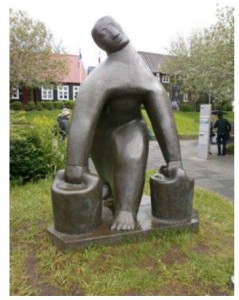 Mother Theresa is a classic example of this type. As are many people who are involved in social work, non-profits, NGO’s and foreign aid work. These people tend to be obsessively concerned about the poor, the homeless, the sick and the dying.
Mother Theresa is a classic example of this type. As are many people who are involved in social work, non-profits, NGO’s and foreign aid work. These people tend to be obsessively concerned about the poor, the homeless, the sick and the dying.
They have a fantasy that they can solve other peoples problems for them. They tend to try to do so believing they know what other people needs are without asking them so. They have issues with cognitive understanding as it relates to generalizing, context and cause & effect. They tend to jump into hard work as fast as they can without appropriate planning and strategy.
The old adage of “Feed a man a fish, you feed him fro a day, teach a man to fish you feed him for a lifetime.” applies here. People with early will are the type that do the fishing and then feed everyone else, creating codependency without cognitively realizing it.
They are driven by powerful heart emotions to work hard and serve others. While this is “good” in principle it can often be disastrous in it’s execution by further enabling dysfunction. They lack the cognitive abilities and foresight to address the underlying issues, believing most problems have overly simplistic solutions that just require “doing” different. Here bodynamic ego functions and associated muscles need to be trained and then utilized to remove these cognitive deficiencies.
Paradoxically people with self sacrificing resent the people they take care of. They resent that they have to give up their power in one way, in order to gain power in another way. That resentment tends to create an anger reservoir. That anger oddly enough can act as a source of energy for further detrimental self-sacrificing.
There is good heart love and bad heart love, and they need to be differentiated emotionally. Because the line is blurry and nuanced. People with self-sacrificing have both types in strong ways. It is simultaneously their greatest strength and also their greatest weakness/shadow.
They are natural “heart openers”. On the flipside that strong open heart also motivates self-sacrificing especially in early childhood in regards to parents and underneath that open heart, is therefore also a lot of repressed anger/rage as well. That rage is often turned on the self and then will lead to depression. If not then it may come out spontaneously on others.
Many people with early will think that love ALONE, along with hard work has the POWER to permanently FIX other people AGAINST their own will. This is a huge trap, and the underlying fantasy.
Service to others
People with early will have a tendency to get trapped in overly simplistic black and white thinking. This is no more apparent than in the motto they often adopt of living their life in service to to others and seeing this as the highest good. This creates a false dichotomy of ‘service to others’ vs. ‘service to self’ where the ‘self’ becomes pseudo-demonized implicitly.
The great question for these types is what happens to the self when living a life in service to others? How do they feel about abandoning the self? Here the likely anger is a combination of repressed sadness and anger that fully need to be felt and moved through, after which new ego functions in feeling a powerful self need to be learned.
The most common reason for the cause of this initial dilemma is that as children these people had narcissistic mothers, where for the mothers it was all about them, and the child learned that in order to receive love it had to give up on it’s own power in service to the narcissistic mother.
The reinforcing problem in this is that ‘service to others’ can become a righteous joy. As with all character structures there is an endorphin/opiate release when engaging in the learned protective function as it became linked to survival by compromising the self in order to maintain contact.
This then perpetuates the issue, and it is only by realizing that the good feeling in reality does not feel good. Again the question for these types is how do these types feel about abandoning the self in their reletnless drive towards serving others? This should help make the cognitve dissonace apparent, so that repressed paradoxical feelings can be acessed to faciliate a breakthrough.
Heart-Love
The fact that having compassion and being present sometimes get’s people to drop their armor gives the ILLUSION of progress. What needs fixing is the underlying mechanism that creates the armor in the first place!
Lack of love from the outside is not the core problem, so it can’t possibly be the only solution. It’s like Christians, ‘for God so loved the world he sacrificed his only son; so all you need to do is accept Christ’s love into your Heart,,,,and ALL your problems will magically disappear!’
For example take someone who complains excessively. If you just heart-love the complainer, and that’s all you do, they will learn that complaining equals getting love and then do it even more!
The complainer has underlying feelings of powerlessness that generates those ill behaviours. Heart-love alone does not have the power to teach him to feel powerful. He ALSO in addition, needs to learn/be taught, a new way of being and feeling power inside his OWN body in very specific ways. It needs to come from within himself, not from without.
This is what bodynamics tries to do different than everyone else out there. Otherwise the cycle will just repeat.
It’s a case of the blind leading the blind. Those that feel powerless try to help others feel powerful yet they have no idea what power feels like somatically to begin with.
The biggest thing these types will have to work on is the associated shame when doing something for one self. The thought of even selfishly indulging in anything often brings up near instant disgust and resistance. If you can recognize that this is actually an unhealthy reaction then perhaps you can begin to redeem yourself and allow yourself to feel good about taking care of yourself.
Also perhaps cognitively realizing that there is a happy medium from between being in service to others and in service to self.
If you work tirelessly trying to please other people and burn yourself out, it actually hampers your ability to successfully help people in the future. You can only empower people to the degree that you are empowered yourself. And that means taking care of yourself and not just doing it but actually feeling good about it.
The greatest help you can provide someone is helping them help themselves. Often these types are so focused on someones immediate needs they fail to look at the bigger picture. And this is critical because a lot of hard work goes wasted and in some cases makes things worse. Large scale studies have shown that foreign aid helpers often undermine governments in foreign countries by providing services that should be coming from elsewhere.
These types can be so focused on only helping those in dire need that they neglect the important task of creating a sustainable system where people won’t need continuous immediate help.
There needs to be a redirection of focus here on empowering the self so that you can be an authority on how other can become empowered. You don’t want to end up in the role of a crutch, that should you perish someone else is really SOL.
These types need to learn that stepping into their own power is what genuinely will allow show and demonstrate for others how to step in their own power. A powerful collective is made up of powerful individuals.
It really is an important and subtle re-frame to be someone who helps the world through demonstration rather than subservience.
On the extreme end self-sacrificing types would see being in prison as a type of vacation. This way they are forced into position where they are unable to help other people and can just focus on themselves. They will often see pleasure in bondage as that to them is the only acceptable means of experiencing it.
Again their survival is linked to their ability to self-sacrifice so there is a dopamine type rush associated with engaging in acts of self sacrifice.
The parallel to the Christ story in Christianity here is an obvious powerful metaphor/archetype; in that salvation or survival is achieved via the self-sacrificial emulation of Jesus dying for the sins of all mankind. The cross also being a symbol of an enduring type of masochism.
On Shame:
Shame is a defense against emotion, those emotions usually being some combination of sadness and anger. Those then stem from having had a sense of personal power taken away at an early age.
The solution is not endurance, this is a coping mechanism for early will self-sacrificing character structure. Endurance perpetuates feelings of shame, all the while covering the underlying sadness and anger. The solution is developing new skills and abilities in ego function to assert and feel one’s own sense of power.
Redemption….if a person wanted to use the concept comes from taking back a sense of power that was lost. It isn’t something that comes from without, it is something that develops from within.
Drawings sketched from Internet photo and private photo.
“This child is in the acute state of shame. He is hunching his shoulders, making an unhappy shameful face and squeezing down into himself in his seat on the floor. The head and neck is pulled into the torso. His arms and legs are flexed. Since motor control in his legs is still quite immature, he will find it hard to stand or walk in this state, but will tend to collapse to the floor or ground.
“The masochistic structure is shaped by threat of humiliation”(Bioenergetics)
The adult is in a similar state of neuromotor organization. His back and shoulders are hunched forwards, and he is “tucking his tail”. His facial expression is apologetic and suffering, and perhaps angry as well. His arms and legs are flexed, and he seems to be weighed down by an invisible yoke on his shoulders, and perhaps also invisible weights in his hands.
A somatic reading would describe him as weighed down by responsibility and tucking his tail in shame, while the solar plexus area, traditionally related to feelings of dignity and personal power, is collapsed.”
Read more about late will judging…
 In will structure the child learns to navigate relationships while being connected to its own sense of power and ability to make choices. A good video examples of late will -judging is: Bitchy Resting Face and Resting Asshole Face.
In will structure the child learns to navigate relationships while being connected to its own sense of power and ability to make choices. A good video examples of late will -judging is: Bitchy Resting Face and Resting Asshole Face.
For these types there is a lot of tension in the neck muscles, upper shoulders and back. They may also have tight hamstrings. This is a result of holding onto emotions and trying to push through resistance head first. These people also tend to really clench their butt muscles. As a result these types typically do not have much of an ass, despite being asshole like (lol). This is a root supporting act that along with tension in the neck and head results in tension along the entire length of the spine. Again the clenching in the butt and the neck is really about bracing the body in order to push through a resistance.
Because as children there types had a lot of resistance from their parents when going into their power they anticipate resistance from nearly everyone and then psychologically brace for it. Realizing this is a mal-adapted defense mechanism and is not necessary will go a long way. It’s really important to explore the possibility that people will support you in stepping into your own felt sense of power, that not everyone is there to undermine it.



5. Love/Sexuality
[ezcol_1half]
Romantic

General Attributes:
- Mother negates sexual component of love
- Child denies sensual/sexual feelings and identifies with romantic & heart feelings
- Repressed sexuality
- Wound is in the pelvis, results in poor pelvic energy
- Experiences their love as pure, untainted by sexual desire
- Coquettish – flirty however waits for other to initiate contact
- Waiting for their prince charming/princess, so they can “give” their heart away when they arrive
- Thoughts and feelings wrapped up in fantasy
- Wants reality to be different than it is
- Defense: Denial
- Paradoxically uses sex to get love/connection
- Female version: Charlotte from Sex and the City
- Male version – chivalry, white-knight
- Romeo & Juliet, Beauty & the Beast
Physical Attributes:
- Neck is held high
- Gaze is innocent/flirty in females, proud in males
- Sex organs are “hidden”/”drawn back”
Need to Learn:
- Integrate fantasy and reality without giving up on either
- Feel sexual arousal/desire in the lower part of their body as opposed to in the heart
[/ezcol_1half]
[ezcol_1half_end]
Seductive

General Attributes:
- Mother focuses on sexual component of love
- Child identifies with sexuality and represses feelings of love
- Gaze is straight on undresses you with their eyes
- Wound is in the heart.
- Guards/protects heart from deeper intimacy
- Paradoxically shows love to get sex
- Female version: Samantha from Sex and the City
- Male version – Don Juan, womanizer, player
Physical Attributes:
- Neck is held straight
- Gaze is seductive
- Sex organs are forward, exhibited
Need to Learn:
- To have friendships without sexualizing them
- Drop the guard around their heart and open to feelings of greater heart intimacy
[/ezcol_1half_end]
Read more about Early Love/Sexuality – Romantic…
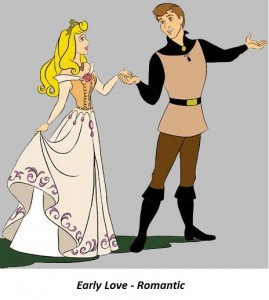 People with “early romantic” love are often seen searching for their soulmate or their other half. This is also known colloquially as a condition of “oneitis”, the belief that he or she is the one and only one. Romantics are the stuff of fairy-tales, long lost lover reuniting and living happily ever after. All the romantic energy is up in the heart and mind quite disconnected form the lower body.
People with “early romantic” love are often seen searching for their soulmate or their other half. This is also known colloquially as a condition of “oneitis”, the belief that he or she is the one and only one. Romantics are the stuff of fairy-tales, long lost lover reuniting and living happily ever after. All the romantic energy is up in the heart and mind quite disconnected form the lower body.
People with early/romantic love tend to often be incensed/scandalized by late seductive types and the things they do. Yet all the while secretly desiring to have some of it themselves.
There is a balance between romantic and sensual love where they are synthesized in a healthy manner, where romantic and sexual desires are fulfilled in sustainable and equal measure.
In early love sexual energy is trapped at the heart. Ask an early love person where in their body they feel horny and they will usually tell you it’s in their heart. Early love leaks sexual energy from the heart and this is what gives them a flirtatious coquettish kind of vibe. The heart is not equipped to contain and handle sexual energy. Because this is an “early” position people with early love are stuck at an earlier stage in childhood development. They haven’t fully matured sexually as the sexual energy they have has not yet moved to their hips.
Early love people will often talk about sex with slight discomfort and may refer to it as dirty, or gross or something that only should facilitate deeper intimate heart connection. They are typically divorced from the natural sensual energy that ideally accompanies sexual energy. They may see themselves self-righteously above sex and “primitive/animistic” desires often deriding sexuality in certain ways. Western culture as a whole suffers from this on a fairly large scale as it has it’s roots in catholic Christianity which saw sex as only necessary for procreation and sensuality as temptation from the devil.
Early love people also tend to have fantastical and unrealistic ideas about their hyper-idealized mate. They expect near perfection and can feel really let-down or heartbroken if reality does not meet their fantasy. Here they need to do some cognitive work in terms of grounding and reality testing. Also the more they can begin to develop their sensual sexual energy in their hips it will take a burden off the overwhelming heart desires.
Late love on the other hand leaks love energy from the hips and has closed of their heart. As this is the later structure they are sexually more “mature” but the heart love has been cut off.
Early love has a strong propensity towards fantasy. This often means they are in resistance to what is, and prefer to emotionally realte to their idealistic fantasies. In essence it’s a defense against reality. This is a double edged sword. When relating to people they may relate only to their perceived highest ideal of someone else, subconsciously ignoring the aspects of a person they don’t like. We all want to be seen as the best that we can be, but we also need to be seen as we are. To not do so is to be in denial, which is a hallmark trait of people with early love.
Early love idealism tends to be an abstraction of reality, not reality itself. The benefit is that people with early love are visionary and have a powerful imagination that allows them to construct a better future and provides the impetus for progress. The problem is when they become locked into future idealism and perpetually and emotionally deny present reality. Early love therefore tends to exist either more so in a romanticized past or a romanticized future.
It really is a sensual connection with the immediate environment as well as the personal body that is an important counter balance. Sensuality does not necessarily mean sexuality. Although for many with early love the two are equated. It’s important to develop a sensual connection with the body and environment to really take it in (need structure) so that reality can be experienced for what it is and not and abstracted lens.
People with early love, struggle to make the sensual/physical component of intimacy “real” in the physical sense. So much of their intimate relationship is abstracted into a heart based emotional experience, and then projected into an experience in the mind.
Ideally sexual/sensuality energy is felt fully and embodied from the hips, and hear love energy is felt fully from the heart and both romantic and sexual exist in a state of unified balance between these two places.
Drawings sketched from photos in Leach (1998) and Hviid (1992) and personal photo.
“(The children shown here are 4-5 years old, the age traditionally assigned to the oedipal stage.)
In her posture, this girl shows both openness and innocent flirtation. Her head is angled and her facial expression is playfully inviting. Her shoulders and chest area, traditionally connected to heart feelings, is somewhat collapsed, and her pelvis and genital area show some congestion and fullness. Her chest seems smaller and more fragile. She combines the pelvic characteristics of the Bioenergetics mixed-rigid structures or Hakomi’s hysterical structure with some of the characteristics of the Bodynamics romantic structure.
The boy has the typical leggy and straight posture of middle childhood. His back is straight and arched, his legs are tense, straight and muscular, and the general sense is of energy and presence. His shoulders and arms show a neuro-muscular ‘readiness’ to do something.
“The rigid structure is shaped by fear of surrender”(Bioenergetics).
The man has a similar somatic organization. His posture is straight and confident, his spine is over-arched, his legs are straight and tense, and his shoulders and arms are ready for action. His body is symmetrical, powerful and controlled. His face shows tension. The whole posture has an upright tense quality.
In a somatic reading, this posture has a lot of ‘life-energy’, but uses it to keep control, stay on top of things and achieve, achieve, achieve. He is holding back against the fear of surrendering to softer feelings and to vulnerability. “
Artistic examples of extreme early love: http://pulptastic.com/korean-artist-beautifully-illustrates-real-love/

Read more about Late Love/Sexuality Seductive…
On the flip side seductive types may harbour a certain jealousy for early romantic types that seem to derive so much value fulfilment from apparent deep soul love and connection. Seductive types may thus come to the conclusion that genuine love is something that will really never happen to them. Their heart is to broken and sex is all they will get. They start to build an aversion or resentment to genuine intimacy believing its the stuff of fairy tales in the negative sense. Seductive types may have dozens or hundreds of partners yet paradoxically feel more empty inside than ever despite all the physical connection they are getting.
Late love people ideally need some therapy where they can get contact at the heart and back of the heart (physically on the back of the body) so it can heal and open.
6. Opinion
[ezcol_1half]
Sullen

General Attributes:
- Parents ignore/shun child when he/she begins forming their own opinions
- Child loses contact when forming independent opinions
- “If I have an opinion, something will go wrong.”
- Has difficulty forming, holding and articulating opinions
- Passively opposes opinions of others; Passive- aggressive
- Non-verbally insinuates another’s opinion as foolish
- “Whatever!”
Physical Attributes:
- Difficulty rotating spine
- Sways from side-to-side
- Slightly raised eyebrows and a passive, given up and know-all expression in the eyes
Need to Learn:
- to feel supported in their opinions, how to form them and hold on to them using bodynamic ego functions & associated muscles
[/ezcol_1half]
[ezcol_1half_end]
Opinionated

General Attributes:
- Parents reject child when he/she cannot explain or argue their point of view
- Identified with being right and will fight for it
- Holds onto opinions irrespective of logic or correctness
- Forward leaning
- Argumentative, stubborn, snobbish
- Actively seeks to confront others
- Picks arguments and tries to persuade others
- Unable to examine and self-reflect on own point of view
Physical Attributes:
- “Ready to fight” expression in the eyes
Need to Learn:
- Letting go of the feeling of the need to be right
[/ezcol_1half_end]
Read more about Early Opinion – Sullen…
Read more about Late Opinion – Opionated
7. Solidarity/Performance
[ezcol_1half]
Leveling

General Attributes:
- Parents/peers/teachers put child down when he/she begins to perform well
- Child experiences a loss of worth and dignity related to performance
- Child often is often shamed/ignored when he/she begins to shine
- Does not want to stand out by being special
- Very concerned with fairness, equality, and conformity
- Identifies with group and tries to maintain status quo
- It’s a sad dog that doesn’t wag its own tail.
- Ideologically akin to Communism, Socialism, Collectivism
- ‘Social Justice Warriors’
- Everyone gets a ribbon for competing; Everyone is a winner.
- Will often engage in shaming to level the playing field
Physical Attributes:
- Face: focused with a searching look
- Appears to have a soft expression in the eyes
Need to Learn:
- To come out and feel secure in their uniqueness
[/ezcol_1half]
[ezcol_1half_end]
Competitive

General Attributes:
- Parents/peers/teachers reward child with contact/connection when he/she performs or competes
- Child begins to see performance as the best way of getting connection
- Child learns it’s value is not inherent but only related to how well he/she performs/achieves
- Ballet and soccer Moms & Dads are notorious for creating this structure or parents who demand nothing less than an A+ academically
- Very image conscious and social status driven
- Driven to acquire status and/or symbols of status; ex. position at work, coming first in a competitive sport, letters behind name (academics), fancy cars, jewellery, big homes, lots of shoes, designer everything, make-up, physique, etc.
- Competes with others for best position, often competes with self
- Ideologically akin to Capitalism, Darwinism
- Often become over-achievers in order to try and maintain connection
- Has difficulty fitting into groups
- Hogs the ball in soccer, or the puck in hockey, or the ball in basketball; has difficulty passing and being a “team” player
- Obsessed with performance & being clever
- Vindictive; Retributive; Jealous
Physical Attributes:
- Face: focused with an expression of goal-directedness and performance
- Appears to have a hard expression in the eyes
Need to Learn:
- To feel that they have value irrespective of their status/achievements/performance
- Te be OK with being an ordinary group member
[/ezcol_1half_end]
Summary:
Solutions:
Tailor made strategies need to be individualized for a person to reach their full potential. Late structures are inherently easier to work with as there are already pschyo-emotional resources in place. For the most part it merely involves a process of letting go. Conventional ISTDP therapy, personal development programs such as Landmark Forum or even entheogenic plants such as Ayahuasca can be used with a relatively high degree of success even though they lack inherent precision.
When it comes to early character structures however, only Bodynamic therapy provides sufficient tools to make serious progress due to it’s unique childhood neurodevelopmental approach. In this case a skilled Bodynamic therapist who can guide a person to discover and utilize somatic emotional resources that simply were not learned in childhood is necessary. Also since the damage was done in mutual connection, it can only be fixed via properly attuned mutual connection. Compassion and positive affirmation for the lost and disavowed aspects of the self is critical here.
The Bodymap:
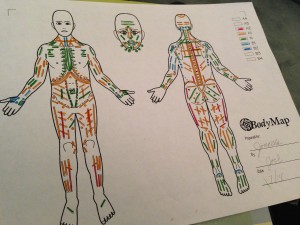 The Bodymap is the single most powerful self discovery and development tool ever created. The purpose of the bodymap is to figure out what issues from childhood are holding a person back emotionally and psychologically in terms of their well being.The process takes about 3 hours as approximately 150 muscles and fascia are tested individually for their elasticity. Every muscle and fascia is associated with a single or multiple character structures as well as ego functions.
The Bodymap is the single most powerful self discovery and development tool ever created. The purpose of the bodymap is to figure out what issues from childhood are holding a person back emotionally and psychologically in terms of their well being.The process takes about 3 hours as approximately 150 muscles and fascia are tested individually for their elasticity. Every muscle and fascia is associated with a single or multiple character structures as well as ego functions.
Muscles that are hypo-responsive are signified by the colour blue and indicate emotional issues that were overwhelming in early childhood leading to a resignation in the muscle and an underdevelopment of the associated emotional psychological function. Muscles that are hyper-responsive are signified by the colour red and indicate emotional armouring in response to stress. The bodymap is an empirical tool to help determine the development and neural patterning of a persons limbic system as manifested anatomically through the body.
It’s important to note that how hypo/hyper-tonic a muscle is has nothing to do with it’s flexibility, physical strength or it’s size. It has more to do with the level of engagement of the muscle and whether it is chronically under-engaged or chronically over-engaged. This is determined mostly by a persons 24/7 subconscious emotional states.
While a bodymap is highly advantageous, it is not necessary to make significant progress. A skilled bodynamic therapist can utilize knowledge of the character structures and apply a trial and error method to see which muscles and their ego functions have the intended effect.
1. Awareness
Becoming aware of feelings, emotions and sensations in the body and where they are located is the first step in resolving issues.
2. Compassionate Affirmation
Having compassion and affirming the parts of the self that have been disavowed. This is most powerfully accomplished with a trained therapist who can have compassion and affirm the parts we may not even recognize in our selves that we have exiled. Understanding the unfulfilled emotional desires of each character structure is critical for this to happen as compassion needs to be tailored to specific aspects of ourselves and the associated emotions.
3. Work with hypo-responsive muscles
In Bodynamics muscles that are hypo-tonic are typically worked on first. They represent lessons of appropriate childhood development that are missing. Muscles and their associated psychological/emotional function are considered psychological and emotional “resources” that help people in daily life. Typically armouring is a result of a lack of resources in other areas. These resources are usually built up first before the compensating armour is “melted” away in order to ensure healthy integration and regulation without catharsis. Hypo-responsive muscles are simply activated while using the associated psychological-emotional-ego function and tracking internal emotional responses.
4. Work with hyper-responsive muscles
Hyper-responsive muscles are typically worked on last through the use of physically stretching the muscle and letting go of the emotional tension that is held in association with it.
Additional Notes:
- People often will use the terms “depression” and “despair” interchangeably. However a clear distinction must be made between these two concepts as solving them requires two completely different strategies. Despair is the feeling of hopelessness that comes along with a feeling the attuned contact is likely never possible. Despair exists primarily in the early need character structure.
- Depression is the result of consistent self-attack and mismanagement of anger and appears to show up most prominently in the Self-sacrificing character structure. To be successfully resolved a sense of power needs to be built up in an individual using bodynamic ego functions & associated muscles as well as some of the ISTDP protocols around re-directing anger and appropriate containment and expression can be a great adjunct.
- Narcissism is primarily an attribute of the three following structures: Late Existence, Late Autonomy and Late Performance.
More Info:
- My Bodymap Analysis
- The Bodymap – Technical article by Joel Isaacs and Peter Bernhardt
- Bodynamic International
- ISTDP Institute – While not related to Bodynamics, ISTDP therapy it nonetheless excellent for working through Anxiety, Anger and Defenses. It works better on late character structures and can also be a great adjunct with Early Love and Early Will.
Download:
- Shapes of Experience – neuroscience, developmental psychology and somatic character formation by Marianne Bentzen (*Note: All above structure drawings and descriptions on this page are excerpted from this article.)
Books:

